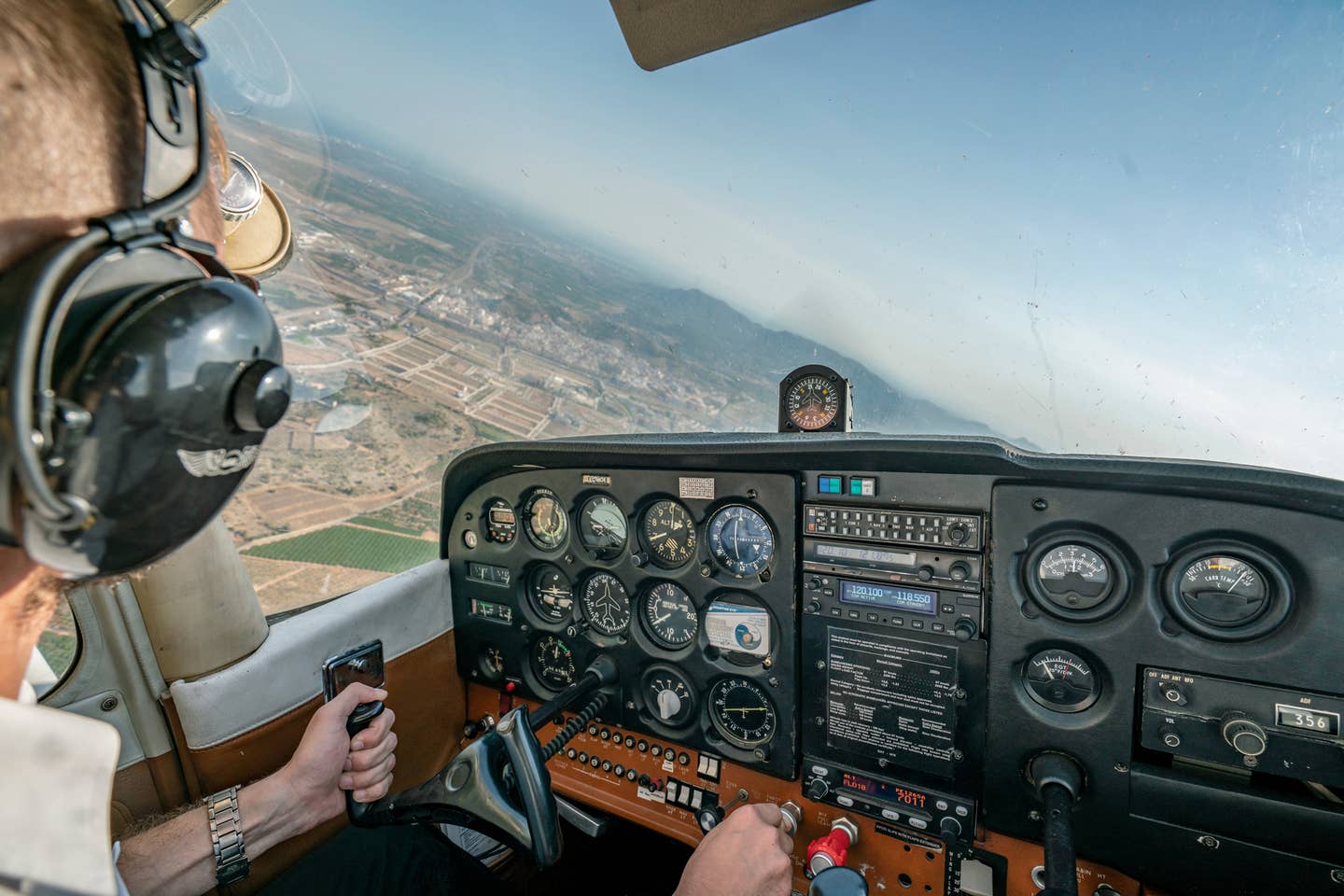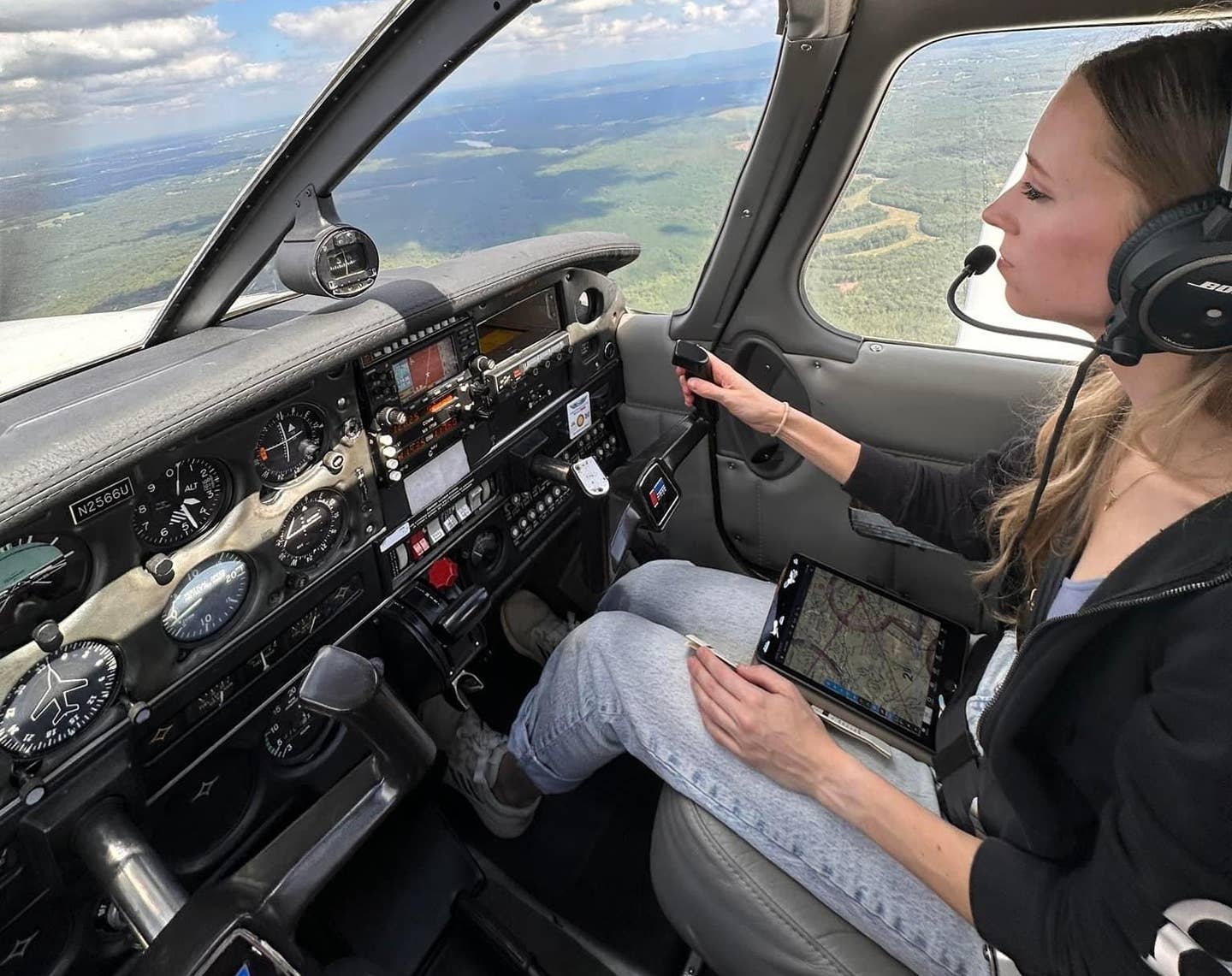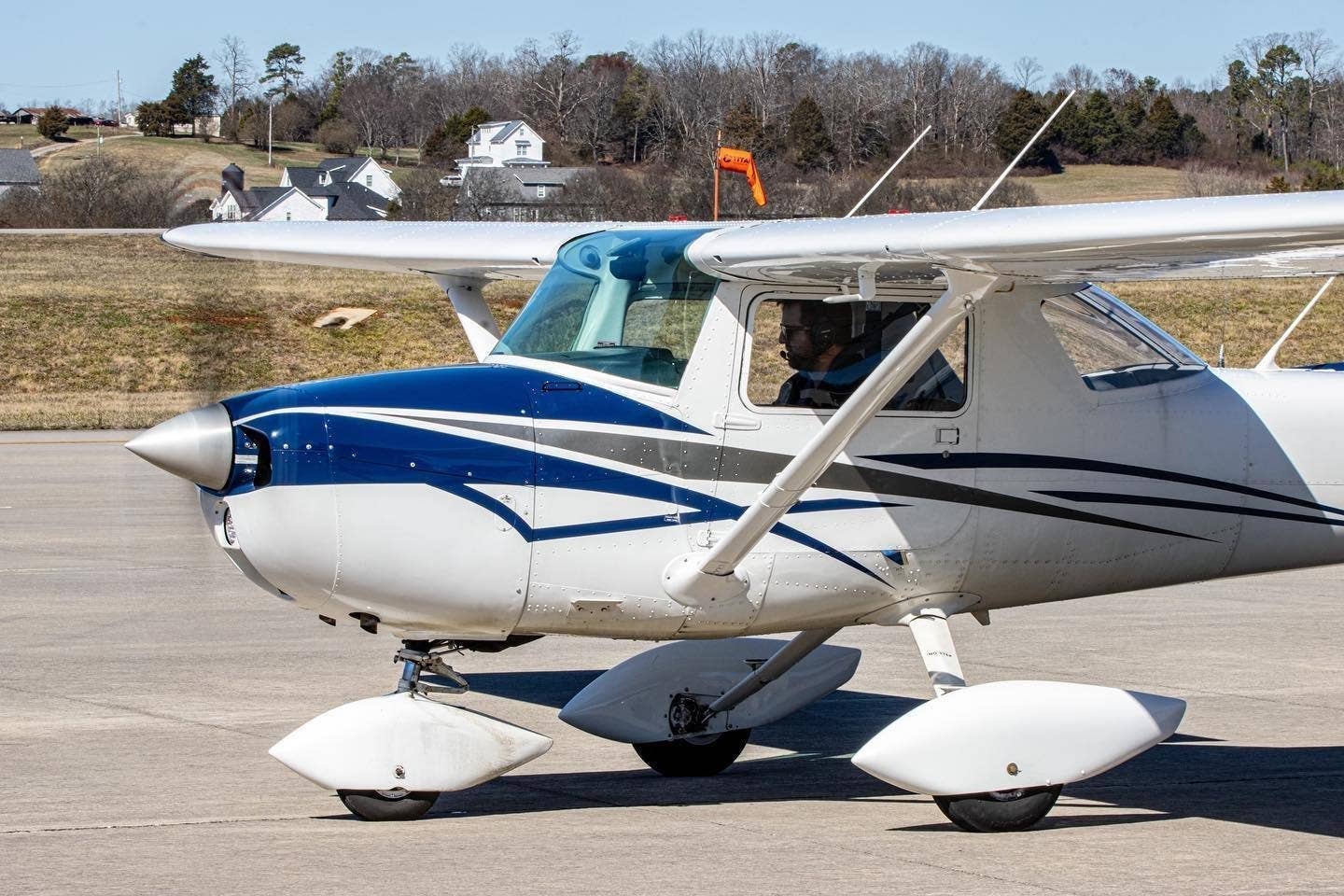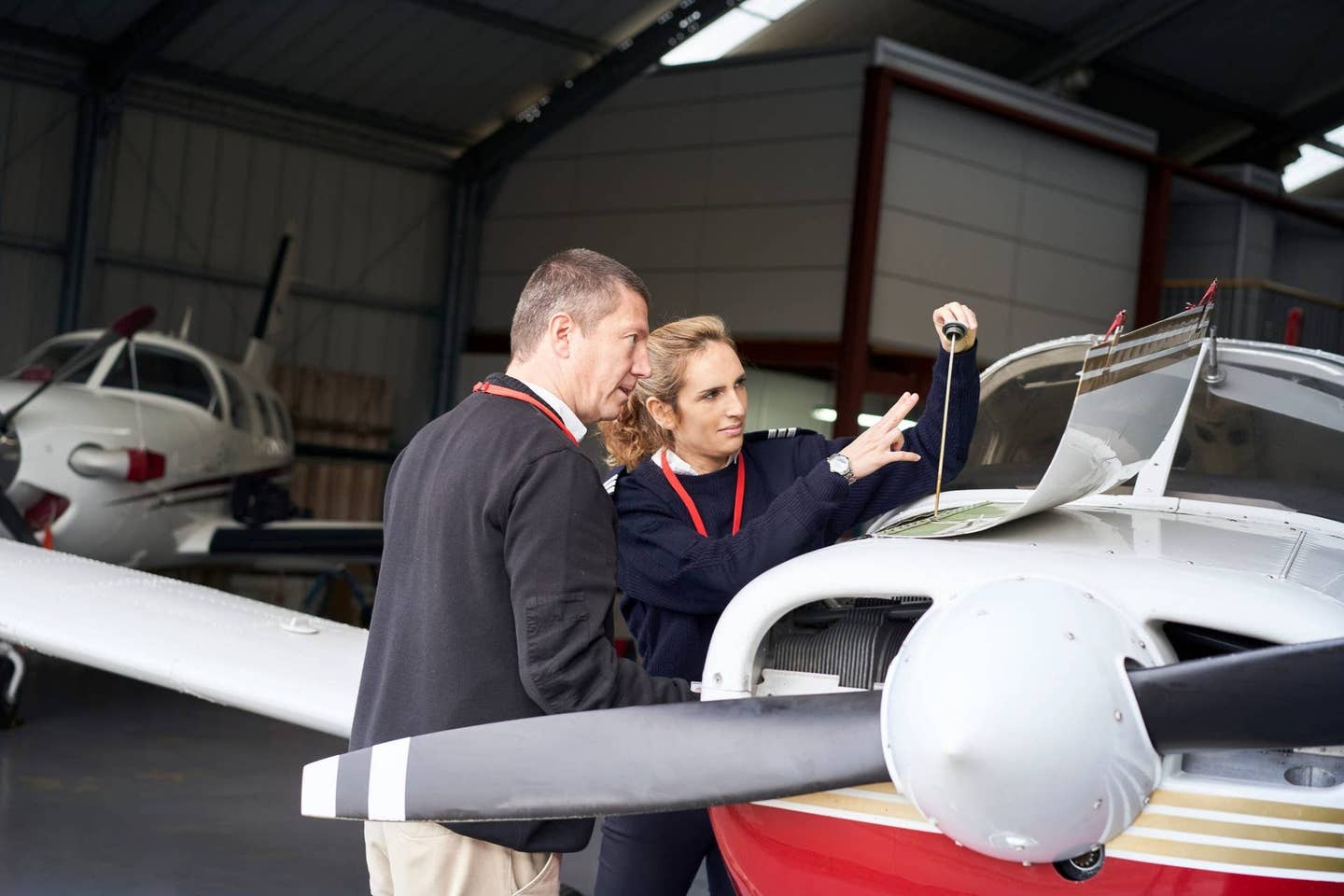The Way Of Active Winglets
It’s not cheap, but it adds performance and safety to a variety of airplanes
 |
Fortunately, airplanes don't deal much in real mousetraps, but every once in a while, someone comes along and invents a better one.
Nick Guida, chief engineer and CEO of Tamarack Aerospace Industries in Sandpoint, Idaho, has done exactly that. Guida has been working for two years on a system of Tamarack active winglets. The Tamarack Active Technology Load Alleviation System (inevitably acronymed ATLAS) consists of two major components---the Tamarack Active Control Surfaces (TACS) and the winglets themselves. Together, the system effectively sidesteps most of the problems associated with winglets.
Winglet technology has been around for years and has been employed on a wide variety of aircraft, from sailplanes and homebuilts to military transports and airliners. The concept of winglets is fairly simple, though the design and execution is considerably more complex. Winglets increase aspect ratio without a proportionate increase in span.
Aspect ratio of a wing is the relationship of span to average chord. A Lockheed U2 has an enormous wingspan and therefore a very high aspect ratio. A Lockheed F-104 (which uses the same basic fuselage) has an aspect ratio of 2.45, less than a tenth of the U2s. The result is glide characteristics for the U2 far in excess of anything short of a high- performance, competition sailplane. The F-104, in contrast, has very poor glide characteristics, so bad that standard procedure in the event of a total power failure is simply to eject.
Back in the 1970s, a NASA aerodynamicist, Richard Whitcomb, did initial research on winglets. He compared a wing with a winglet to one with a slightly longer wing. Both devices put an equal structural load on the wing. Whitcomb proved that winglets reduced tip drag by about 20% and offered double the improvement in the wing's lift-to-drag ratio.
Part of the reason was/is that winglets provide an artificial method of increasing the wing-aspect ratio without a proportional increase in span. They also can impart a slight forward thrust in the same manner a sailboat's sail can propel a boat forward into the wind. (Just think---if we could do the same with airplanes, we wouldn't need engines for cruise.)
In brief, winglets reduce the drag produced by the confluence of the airflow on the upper and lower surface of the wing where they meet the tip. This conjunction of air at the tip forms a vortex that trails behind the aircraft and creates drag.
Winglets won't work with some airfoils, and they're only marginally effective on others. In selected applications, however, they can generate significant additional lift or reduce drag, both of which result in the same benefits. Many airlines, flying aircraft never initially designed for winglets, have discovered that tipsails can improve speed and efficiency dramatically, sometimes resulting in as much as 5-7% percent reduced fuel burn. On the Boeing 737 NG and BBJ, for example, blended winglets reduce the tip vortices dramatically, and that means less drag.
 Tamarack winglets extend wingspan on CitationJets by four feet and can improve fuel savings, range, short-field performance, climb, wing loading and more. |
The airflow around winglets is complicated, however, so much so that one design definitely doesn't fit all. Cant, the angle to which the winglet diverges from vertical, and toe, the angle at which the winglet(s)' airfoils diverge from the relative wind, determine the magnitude and orientation of the lift force generated by the winglet itself.
Winglets come in a bewildering variety of shapes, some nearly vertical and severely swept, others in airfoils above and below the wing at various angles from vertical. When properly designed, winglets provide the effect of increasing aspect ratio without extending wingspan.
Trouble is, such advanced technology isn't free. Airliners have realized significant advantages for a dozen years, often benefitting by as much as a 7% lift increase, but retrofitting them on a 737 can cost as much as $800,000 installed and add over 400 pounds to empty weight. Both those costs may be tough to amortize unless the aircraft operates on long legs at high altitude.
Additionally, passive winglets can translate wing-bending moments all the way to the wing root. Turbulence only adds to the problem and demands structural beef-up.
But what can winglets do for the little guy? Tamarack's CEO Guida developed the system for initial installation on his personal Cirrus SR22, and Plane & Pilot recently flew with him in the modified aircraft out of Van Nuys Airport, Calif. Guida explained that one of the problems with winglets is they can exert additional loads on the outer wing panels. These loads aren't significant in relatively smooth air, but they can become a source of concern when the sky fills with turbulence.
Accordingly, Guida designed his ATLAS winglets to relieve gust loads any time the airplane is experiencing 1.5 Gs or more. That's a fairly major gust load, as it turns out. My first airplane was a Globe Swift that I fitted with a G-meter, expecting to see some big gust loads over the California desert in summer. I rarely saw more than 2.0 Gs and even 1.5 Gs was uncommon.
Guida's active winglets operate by deflecting up whenever the sensor registers a G-load of 1.5 Gs or more. This effectively unloads the wingtips, and virtually eliminates the possibility of any structural damage associated with the addition of winglets. The ATLAS system is automatic and reacts faster than human reactions, something like the yaw dampers that help reduce yaw instability in turbulence.
Operationally, the only function check comes during the run-up. The pilot turns the system off and looks for a warning light, and assures that the two control vanes on the outer trailing edge of each wing are in the default position. After that, there's nothing left to do but fly.
One common problem of demonstrating such technology in Southern California is that turbulence is rarely much of a problem. On the day of our flight, however, we were fortunate to have the tail end of a front with puffy cumulus decorating the sky.
(Guida's SR22 also included a feature uncommon on Cirrus aircraft---a prop control. The Klapmeiers designed the Cirrus for single-lever control. Guida's STC returns control of the constant speed prop to the pilot.)
In-flight manners with the ATLAS unit installed are conventional, with no unusual characteristics. Roll rate, flare response and stall characteristics remain conventional, and the higher aspect ratio imparts a reduced stall speed.
Tamarack tested the system in every possible configuration, including the worst possible combinations. These included in total opposition, with one TACS fully deployed up and the other deployed down. Test pilots accomplished landings with no problem in this configuration.
In short, there's no operational downside to the ATLAS system, but there's a definite esthetic upside. Practically everyone agrees that winglets add a futuristic look to any airplane, and the Cirrus SR22 benefits from the swept tips.
The ATLAS winglets are carbon fiber and add only five inches to span, and the TACS that actually unload the outer wing are constructed of aluminum. Total weight of the system is only 24 pounds, so it's not a major factor in weight and balance. To offset the weight of the ATLAS, Guida offers a cargo conversion that converts the Cirrus rear compartment to a flat floor and allows the airplane to carry an additional 34 pounds of useful load. Price of the system uninstalled is just under $60,000.
Of course, Tamarack's primary target for their STC'd ATLAS system is corporate jets, and the company showed off the concept at last Fall's NBAA Convention in Orlando, Fla. Guida's company has developed the system for the Cessna CitationJets, installing two-foot carbonfiber sections on the outer wing, extending span by a total of four feet. Tamarack was showing off the system on a Citation 525 at the NBAA Convention.
The list of improvements possible with the new Tamarack winglets is impressive: improved fuel savings, better range, increased max zero fuel weight, better short-field performance, improved climb and high/hot performance and lighter wing loading. Tamarack plans to develop comparable ATLAS installations for use on Hawker and Embraer jets. No prices had been announced at press time.
And yes, before you ask, Nick Guida says the company is talking to a number of OEMs regarding the possibility of offering the ATLAS installation as either standard or optional equipment on new aircraft. For piston fans, guess which manufacturer is most interested?

Subscribe to Our Newsletter
Get the latest Plane & Pilot Magazine stories delivered directly to your inbox






